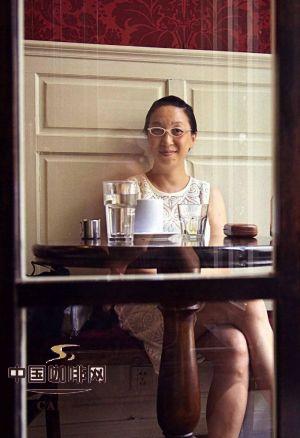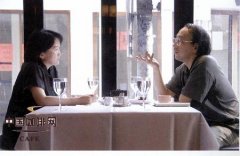Cafe culture Cafe rise of intellectuals

Mr. Lu Xun once wrote in the Revolutionary Caf é: "the towering foreign building in front of Kuo Street, the doorway is a glittering glass signboard, upstairs are our celebrities in today's literary and art circles, either talking or meditating." in front is a large cup of steaming proletarian coffee, but it is really an ideal paradise. " But Lu Xun himself does not drink coffee, he drinks green tea alone, so "I have never been to such a coffee shop."
But a year after the Revolutionary Cafe was written, Lu Xun went to the Public Cafe, which was close to his residence in Shanghai at the time, in order to attend the party of the League of the left. He still doesn't drink coffee, just a cup of green tea, and then every time he goes there, he still needs only one cup of green tea. Wei Mengke, an old writer, recalled that in terms of "coffee or tea", Mr. Lu Xun did not have any Western habits. Everyone else asked for coffee, but he asked for tea, and sometimes Xia Yan accompanied him to drink tea. Although he did not enjoy the store's signature drink, the public coffee cafe is still famous for Lu Xun's many trips. Gongfen was located near the tram terminal on North Sichuan Road in Shanghai at that time, opposite the Neishan Bookstore. It must not be the earliest coffee shop in Shanghai, nor was it the best coffee shop in Shanghai at that time. But because the Chinese left-wing Writers' Union became what later generations called "the most famous coffee shop of that era".
Yang Xianru recalled: "in the 1930s, Comrade Yang Hansheng used to take us to the activities of Leftist writers at the Public Cafe on North Sichuan Road. This is a coffee shop run by foreigners, so it is safer to inquire about room bags on patrol. " In 1934, Xiao Jun and Xiao Hong came to Shanghai from the northeast with manuscripts of their novels. They first went to the Neishan Bookstore to meet Lu Xun, and then Lu Xun took them to have a chat with public coffee. Coincidentally, Zhou Yang's wife also recalled that Zhou Yang had asked Zhou Yang to wait in the public caffeine, first went to the Neishan bookstore to find Lu Xun, and then the three of them had a long talk over coffee and tea in the small private room on the second floor of the public coffee. It can be seen that the only way for the literary youth at that time to meet Lu Xun was the Neishan Bookstore-the Public Cafe Cafe.
In Japan, cafes also became popular among intellectuals and then among the general public by virtue of the cultural movement. On April 13, 1888, Japan's first coffee shop opened twice in Tokyo's Ueno Nishimen-cho (another said that the earliest coffee shop in Japan was the "washing Pavilion" opened in Tokyo's Nippon Bridge in 1886). The owner, Zheng Yongqing, also has a special relationship with China. He is the adopted son of Zheng Yongning, a descendant of Tian Chuan Qi Zuo Weimen, a younger brother of Zheng Chenggong. Born in Nagasaki in 1859, he studied at Yale University in the United States and is proficient in Chinese, English, French and Japanese. As a senior intellectual, Zheng Yongqing pursues to promote coffee as a kind of literati spirit. Taking the teahouse acceptable to the Japanese literati at that time as a signboard, he named his coffee shop "can you teahouse" and sold Westerners' coffee in it. The Japanese pronunciation of "can" is similar to that of "coffee", and later it even became a fixed translation of "coffee" in Japanese. As a beverage first liked by cultural people, coffee had a lot of literary translation at that time, including "can not", "bone non -", "bone happiness", "Jiaxi" and so on. Some people have named it "Tang Tea", "Xiangtang" and so on. Zheng Yung-ching also complied with this trend and put all kinds of books, newspapers and periodicals in his own coffee shop, even the four treasures of the study, in short, he strived to integrate the aroma of books and coffee. At that time, Japanese intellectuals also had many interesting hobbies when they went to cafes. For example, some people would bring geisha to cafes to accompany reading, while others, like Mr. Lu Xun, showed up frequently in cafes but never drank a cup of coffee. Because at that time, it was important to sit in front of a high-backed chair in a cafe, with a popular literary publication spread out on the table, and it didn't matter whether you drank coffee, green tea or even boiled water.
Zheng Yung-ching's "can not teahouse" closed down quietly after four years of opening because of its high style, poor management and successive years of deficit. However, the coffee culture craze set off by "whether the teahouse" has led to the emergence of successors. In 1890, the Gem Coffee Shop in Asakusa, Tokyo, officially opened. In 1909, Caf é Paulista, the first generation of Brazilian immigrant Mizuno in Japan, got free coffee bean sponsorship from Brazil, thus opening chain stores all over Japan. The Tokyo branch, which was founded in 1911, still stands opposite the toy store of the Badingmu Museum in Ginza. At that time, the advertising slogan of this coffee shop was "hot coffee as black as ghosts, sweet as love, and hot as hell." and the coffee here is cheap and good, only five cents per cup, plus five cents, and you can get a doughnut. So it attracted many young scholars at that time and college students from nearby Keio University to stop here. It is said that Akita Yuki, a member of the Esperanto Popularization Society at that time, often bought only one cup of coffee but occupied ten seats. He held a seminar here every week, which was regarded as an example of being stingy.
When it first opened, the Old S ã o Paulo Cafe had a hostess department on the second floor. In 1911, Qing, a women's magazine founded by Hirazuka Thunderbird, often held editorial meetings in the hostess department, where a group of fashionable and famous women gathered to talk and sat all afternoon. "Qing" is an 18th century British "bluestockings" female literati, and blue socks later became a symbol of Japanese new women. Although today's "Old S ã o Paulo" has cancelled the hostess department, women in blue socks are still given special treatment and coffee money can be waived. I have also heard that once Lennon and Yoko Ono stayed in Ginza and came here for three consecutive nights to order the shop's signature Paulista Old to drink. This kind of mixed coffee has been on the menu since its inception. Yoko Ono can be regarded as a new woman. I wonder if she went there wearing blue socks at that time.
Qiao Qiao is a young but experienced food columnist, food critic, and sun-inspired "foraging" worker. She is the author of "eat, laugh", "people and food are equal" and "Cooking woman's Diary" and so on.
Important Notice :
前街咖啡 FrontStreet Coffee has moved to new addredd:
FrontStreet Coffee Address: 315,Donghua East Road,GuangZhou
Tel:020 38364473
- Prev

Coffee is an ancient consumer product. Starbucks carried it forward.
Make every cup of coffee and grasp every detail. For Starbucks, word-of-mouth is the best advertisement. You may be facing the 100th guest today, but for the guest, it is the first cup of coffee. His knowledge of Starbucks is that from the infatuated September of this cup of coffee, when you enjoy shopping on the famous global OUTLETS, you might as well go to
- Next

A good place to relax and write in a cafe
This is an era in which the use of wifi (wireless network communication) has become a general trend, but the Beijing municipal government requires public places such as cafes, hotels and bookstores to be monitored by unexplained and ridiculously expensive security software, forcing coffee shop owners to cancel wifi services, and customers have expressed loss of confidence in the future of life in cafes. I decided to be optimistic and think about it.
Related
- How did the Salvadoran coffee industry develop in Central America?
- What exactly does the golden cup extraction of coffee mean?
- The Origin of Coffee flower
- [2023 Starbucks World Earth Day] there are more meaningful things besides free Starbucks coffee!
- What kind of coffee is there in Spain? 9 Flavors of Spanish Coffee
- Aromatic African coffee| Kenya's coffee culture and historical production area
- Liberica Coffee Bean knowledge: the characteristics of Liberian Coffee beans of the three original species of Coffee beans
- The origin and formula of Spanish latte introduces the taste characteristics of Bombon coffee in Valencia, Spain.
- How to adjust the solution of over-extracted coffee
- What is the tasting period of coffee beans? What is the period of coffee and beans? How should coffee wake up and raise beans?

